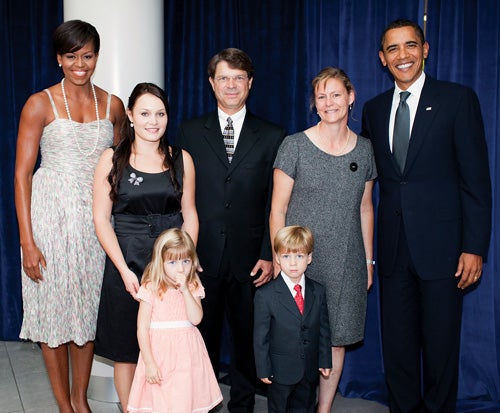Richard Piacentini ’77

A Model Garden
When President Barack Obama and other world leaders gathered in Pittsburgh for the G-20 Summit last September, they enjoyed dinner at the Phipps Conservatory and Botanical Gardens, a 113-year-old institution that has reinvented itself under the leadership of executive director Richard Piacentini ’77.
More than 300 organizations bid on hosting G-20 events, and Phipps won three of them, including the lavish dinner served on tables made from locally reclaimed trees.
Phipps itself seems a metaphor for Pittsburgh’s recovery from post-industrial near-ruin. “The president chose Pittsburgh as the G-20 site because he saw it as a rejuvenated city,” Piacentini said. “Pittsburgh has done much better than most of the country during the recession. It’s a city that has reinvented itself.”
Since Piacentini took over in 1994, Phipps has become a model of environmental leadership and efficiency in everything from its new visitors center to educational programs and greenhouses. Piacentini has led a $36.6 million expansion marked by environmentally sensitive designs such as the first
LEED (Leadership in Energy and Environmental Design) certified building in a public garden in the country.
A pharmacy major at URI, Piacentini, who later earned an M.B.A. and a botany degree on his way to a career change, has traveled the world to impart advice on energy efficient development. He is currently working with URI’s College of Pharmacy in designing a medicinal plant conservatory as part of the college’s new campus facility.
“The impetus for LEED came to us from architect Bill McDonough,” Piacentini explains. “We were preparing for our expansion in the ’90s, and he started talking to us about green buildings. It made a lot of sense; we thought we should reflect our values. Now we are recognized internationally for exactly that.”
The expansion isn’t complete yet. Piacentini is putting the finishing touches on fundraising for Phipps’ Center for Sustainable Landscapes, a multi-million dollar project designed as a “living” building with net zero energy consumption.
—John Pantalone ’71
 Home
Home Browse
Browse Close
Close Events
Events Maps
Maps Email
Email Brightspace
Brightspace eCampus
eCampus


